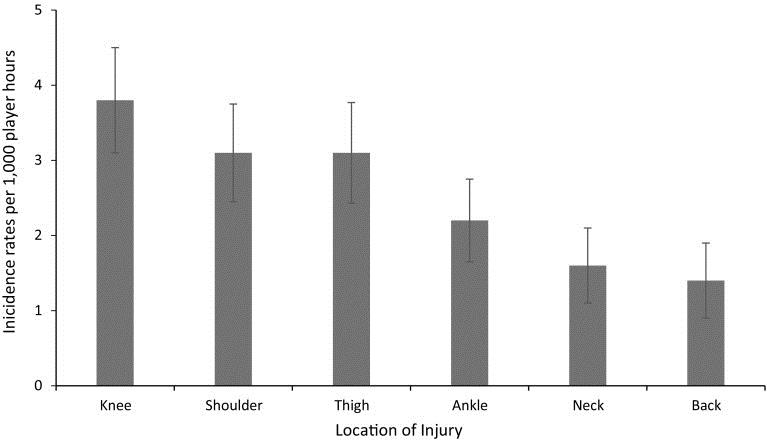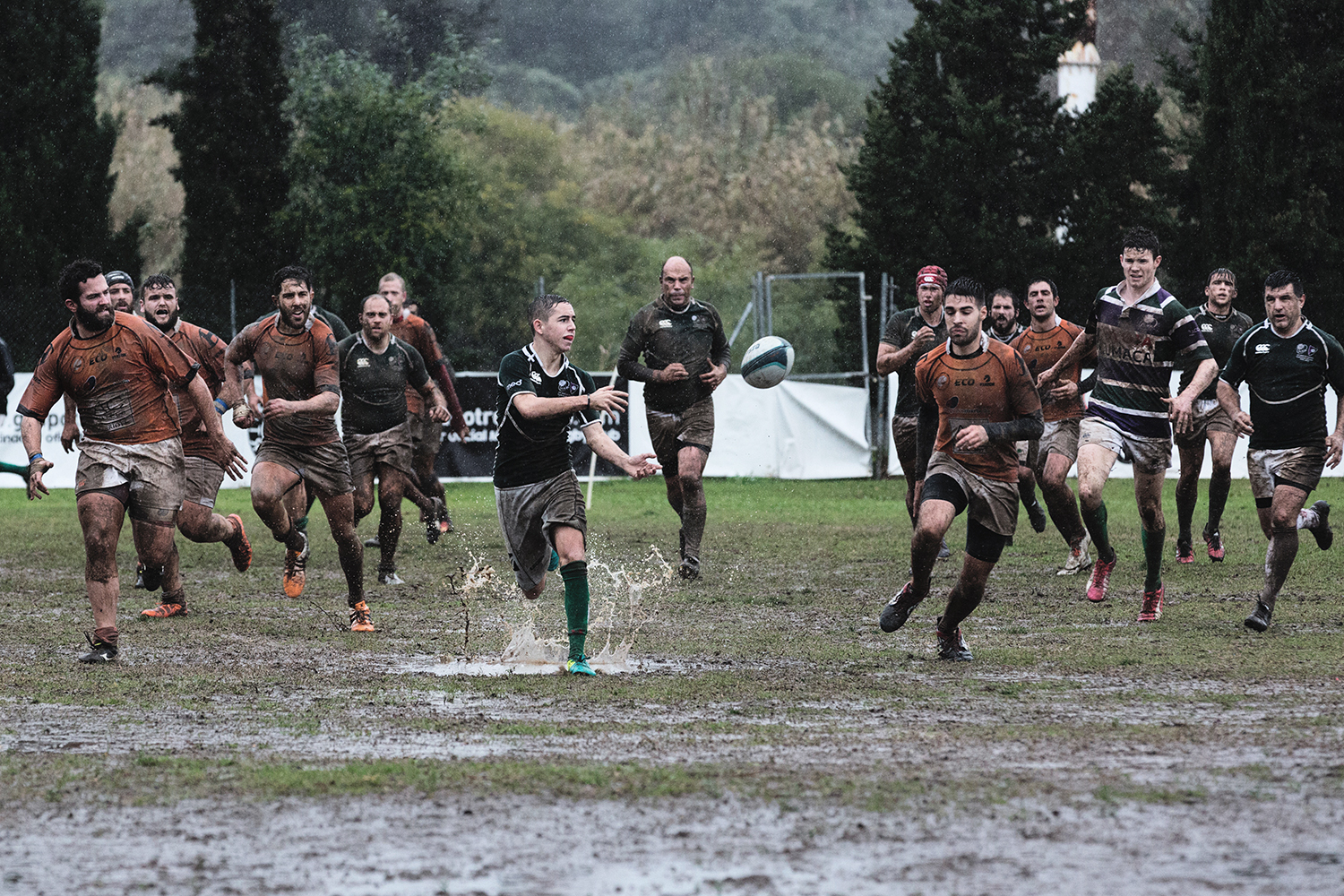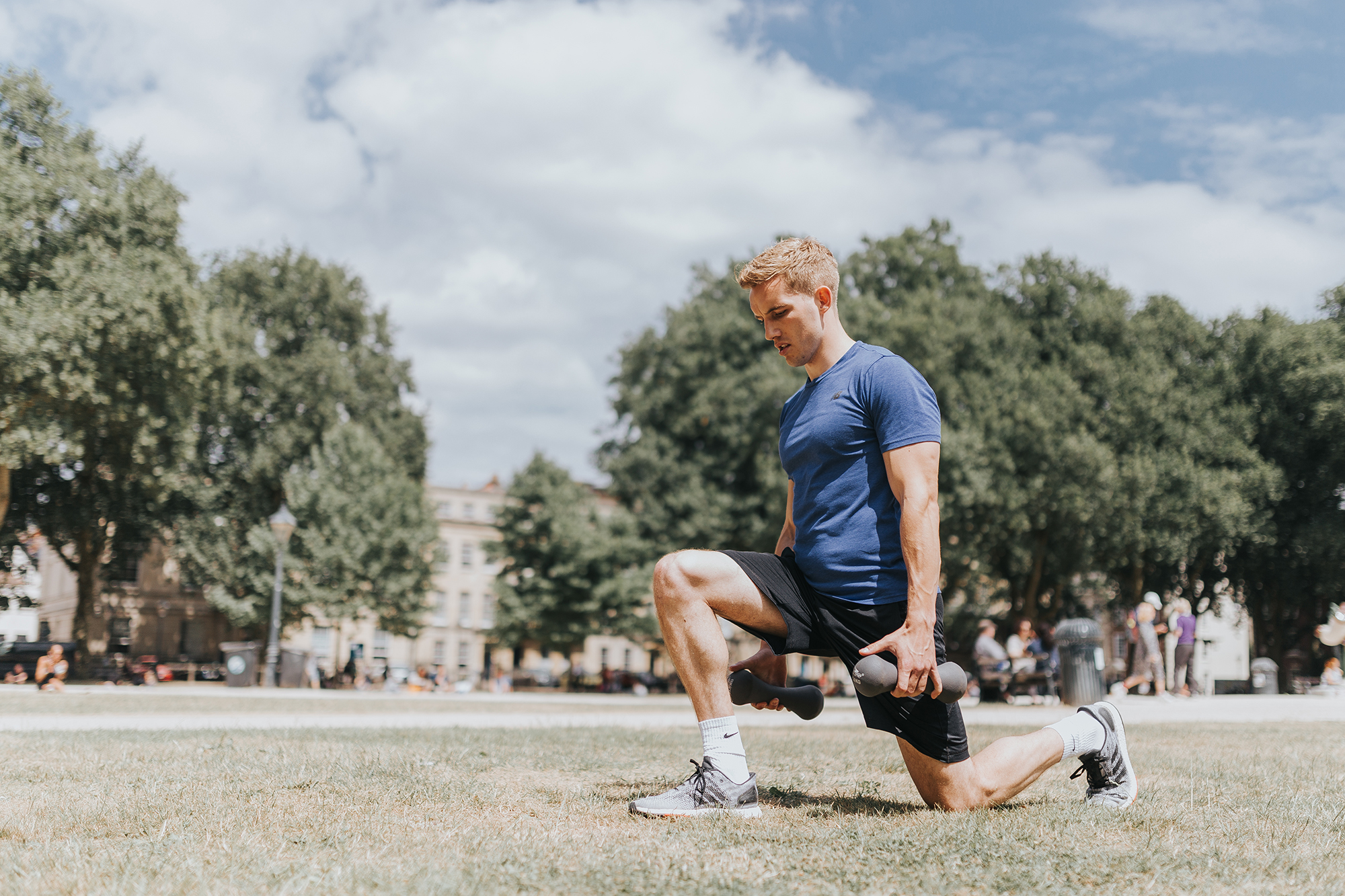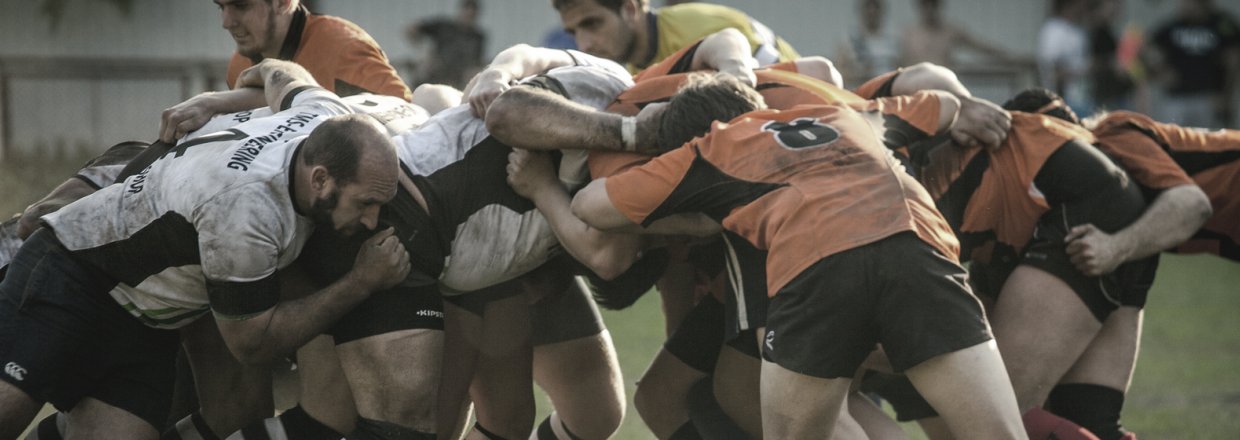Huw Dimond is an Ascenti Physiotherapist based in Redditch and Gloucester. On top of his Physiotherapy degree, he also has a degree in Sport and Exercise Science.
Huw's passion is rugby, which he played from childhood until retiring in 2018. During this period he had a five-year stint playing professional rugby in Italy with Biella Rugby Club. Since qualifying he has worked as a Physiotherapist with the Oxford Harlequins RFC and Wasps Junior Academy.
Overview of rugby
Rugby is an explosive sport with fast-paced action interspersed with short periods of rest, and it involves a lot of collisions. Due to the number of collisions and intensity of the sport, injuries are a common occurrence and can lead to long periods on the sidelines.
Below is a graph to show the most common areas injured while playing rugby – it shows that the lower limbs are injured more regularly than anywhere else. Typical injuries include ankle and knee ligament sprains, hamstring and rotator cuff muscle strains, dead legs, shoulder dislocations and concussion.

Due to the nature of the sport some of these are unavoidable; however, you can reduce the risk of injuries and the time you are out of the game due to injury with some simple tips.
With the Six Nations Championship in full flow, Huw has put together his top tips to help minimise the risks of the game, reduce the long-term effects of injury and return to action faster.
Huw’s top physio tips for rugby players
1. Concentrate on tackling technique
In amateur rugby, studies have shown that contact with other players accounts for the majority of injuries, with the tackler being more at risk than the player being tackled. Poor technique when tackling regularly results in shoulder, neck and concussion injuries.
In order to reduce the risk during tackling, working on your technique is vital. I would recommend regularly returning to basics to get your positioning correct before progressively increasing the difficulty of the tackle and speed of the contact. Your coach is the best person to help you to improve in this area of your game.

2. Warm up properly
Warming up prior to training and matches is vital in order to prepare your muscles and cardiovascular system. This is particularly evident in the hamstring muscles, which are often strained or torn during rugby due to the high speed, stop-start nature of the sport.
Research has shown that by adding one exercise to your warm-up – Nordic curls – you can reduce the chance of hamstring strains by 50%. This goes to show the importance of a well-structured and thorough warm up prior to training sessions and matches.
Speak to your local Ascenti physiotherapist for further exercises to aid your warm up.
3. Improve your fitness levels
Research has shown that the majority of injuries happen during the second half of a match. This is when players are getting tired and their technique suffers as a consequence. Improving your fitness levels will allow you to play for longer before you reach this stage, and therefore help to reduce the risk of injury that comes with poor technique.
Unfortunately, there is no easy way to improve your fitness levels, this comes with effort and time. Make sure you are attending the training sessions and putting 100% effort in to get the best rewards.
If there is an area you feel you struggle with or you are returning from an injury and would like some advice on how to increase your fitness levels without further injury then speak to your local Ascenti physiotherapist.
4. Optimise recovery after matches
- Cool down – while many rugby players are looking to get off the pitch and into the bar as soon as possible, you will find that a good cool down session will reduce soreness and stiffness in the days following a match. A typical cool down involves some gentle cardiovascular exercise and stretching. This will aid you to slowly reduce your heart rate, body temperature and relax your muscles. It will also help to flush out by-products of exercise, such as lactic acid, which can lead to stiffness and cramping in the following days.
- Take a recovery day – reduce stiffness the day after a match with some gentle aerobic exercise, whether that be a jog, cycle or swim. Personally, I used to benefit from swimming the day after a match as it helped to reduce soreness and muscle tension throughout the whole body.
- Have a massage – after a game, it can be very effective to work on specific areas of soreness by reducing muscle tone, increasing blood flow and reducing the delayed onset of muscle soreness.
- Refuel – make sure you eat plenty to replenish your fuel stores and deliver protein to aid muscle repair.

5. Do a strengthening and stretching programme
A balanced and structured training regimen involving strength, flexibility and endurance will help reduce the risk of injury by:
- Increasing the support around your joints by increasing the strength of your muscles, tendons and ligaments.
- Improving the flexibility of your muscles, and therefore reducing the risk of muscular strains and tears.
- Reducing the impact of fatigue on technique, and therefore reducing the chance of injury during the contact area.
6. Respond to injuries correctly
Remember PEACE and LOVE for injuries:
During the first 3 days of an injury your body enters what we call the ‘inflammatory stage’. This stage is often the most painful and needs the correct management, known as PEACE:
P Protection - avoid activities and movements that increase pain for the first few days.
E Elevation - elevate the injured limb higher than the heart as often as possible.
A Avoid taking anti-inflammatory medication as they can reduce tissue healing. Avoid icing for more than 5 minutes.
For safe advice on ice read our guide to using ice at home here.
C Compression - Use a compression bandage or taping to reduce swelling.
E Education - Your body knows best. Avoid unnecessary treatments and medical investigations and let nature play its role.
What else should I avoid?
During the first 3 days after injury you should remember the ‘NO HARM’ protocol. This means no:
- Heat
- Alcohol
- Running / exercise
- Massage
These activities may prevent or slow down the healing process.
What should I do after the first 3 days?
After this time, and for the next 7-14 days the injury needs LOVE:
L Load - let pain guide your gradual return to normal activities. Your body will tell you when it’s safe to increase load.
O Optimism - condition your brain for optimal recovery by being confident and positive.
V Vascularisation - choose pain free cardio-vascular/aerobic activities to increase blood flow to repairing tissues.
E Exercise - restore mobility, strength and balance by adopting an active approach to recovery.
If symptoms do not require immediate medical attention and do not settle down in the proceeding days, then book in to see your local Ascenti physiotherapist. Your physiotherapist will be able to assess the injury, and give advice on whether a rest period or restricted training period is required. Then together with your physiotherapist, a plan will be put in place to facilitate your recovery and get you back out onto the pitch.
Early assessment and treatment will aid a much swifter return to play and reduce the risk of re-injury.
Find out more: How to treat a soft-tissue injury, sprain or strain
7. Be cautious of concussion
Concussion is the buzz word in rugby at the moment. There has been a massive increase in the recorded cases of concussion over the last few years. While some of this is down to better diagnosis of the injury, a lot of it is down to the collisions in the game getting bigger and bigger.
Concussion has become a major area of focus in rugby now due to the potential long-term risks that it poses if not dealt with correctly. Some players have had to retire from rugby in recent years due to recurrent concussions that have led to chronic headaches, confusion and even epilepsy.
Assessment and management of this injury has improved vastly, which is helping to protect the players from long-term effects. However, in order to be protected, you MUST listen to the pitchside first aider, your GP and/or physiotherapist.
The RFU have put together a lot of information on concussion with guidance on recognising the symptoms, what to do next and a protocol to follow prior to returning to play. Visit the England Rugby website for more information.
